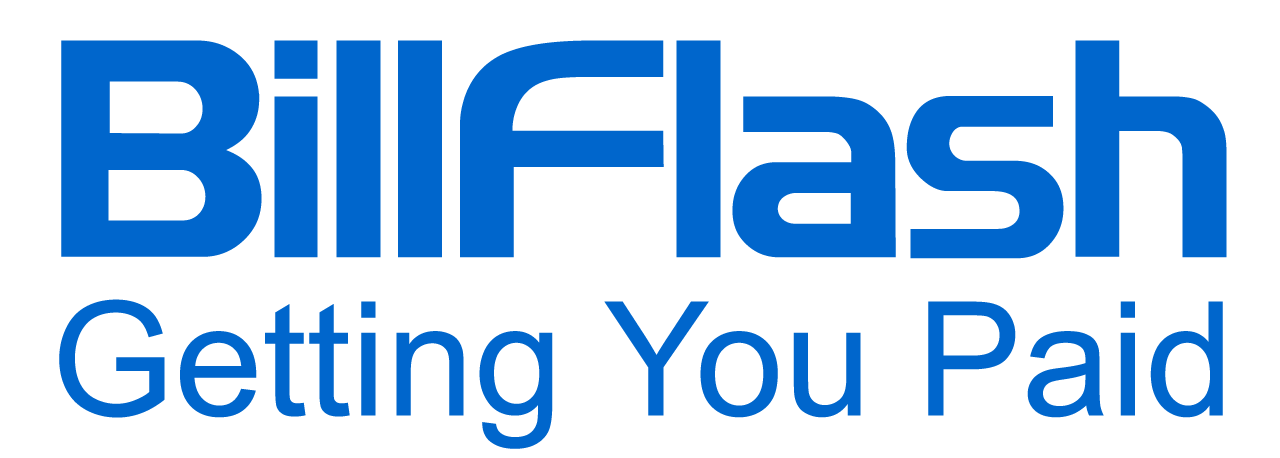Do you want to discover the true ROI of automated medical billing software? Read on as we discuss its benefits over manual billing processes!
Medical billing can be tricky—it's a complicated process that involves accurately submitting claims, following up on those same claims, appealing the denied claims, and responsibly handling administrative tasks. It also requires attention to detail and a thorough understanding of healthcare regulations. Unfortunately, for many healthcare providers across the globe, medical billing is still handled manually. This is where automated medical billing software comes into play.
Manual medical billing is inefficient, more prone to errors, and can result in lost revenue due to poor claim management. Automated medical billing software aims to streamline the billing process through features like automated workflows and auto-adjudication of claims. Like any major investment in a medical practice, determining the return on investment (ROI) of medical billing software is crucial.
Understanding Automated Medical Billing Software

Medical billing software can automate and streamline the entire process of submitting, tracking, and managing medical insurance claims. These tasks were once only handled by slow and broken manual processes, but automated medical billing software can speed up those once fragmented workflows.
Key Features and Functionalities
While providers can find a long list of medical billing software vendors that make claims that their solution will make the billing process as simple and effective as possible, the specific features from Software A to Software B will differ:
- Patient billing: Generate and send patient statements and invoices; process payments
- Reporting and analytics: Customize reports on denial rates, aging claims, collection cycles, etc.
- Practice management: Schedule appointments, verify eligibility, and maintain patient records
- Workflow automation: The configuration of rules and triggers to manage follow-up, rejections, and appeals
- Claims management: Submit claims electronically, auto-populate medical forms, assign codes, validate entries, and track their status
- EHR/EMR integration: Share patient data and updates between billing systems and electronic health records
How It Streamlines the Billing Process
Automated medical billing software can provide enhancements across key revenue cycle workflows when implemented the right way. For example, claims submission becomes faster and more precise through electronic batch processing instead of manual entry. Built-in tools recommend the right codes and modifiers to apply. Pending claims tracking is also streamlined with automated workflows that monitor statuses and trigger follow-up actions.
Denial management improves significantly by utilizing claims scrubbing engines before submission and auto-generating appeals for rejected claims. Strong and detailed analytics deliver clearer visibility into performance metrics (e.g. rejection reasons, aging claims, and reimbursement cycles, allowing data-driven process improvement). Patient billing and collections are accelerated through payer-ready statements and online payment options.
The Cost of Manual Billing Processes
The cost of manual medical billing processes can differ depending on several factors, such as the healthcare facility's size, the number of patients being served, the complexity of medical billing codes, and how efficient the billing staff is. However, some common costs associated with manual medical billing processes include:
- The time-intensive nature of managing high claim volumes, patient statements, reports, and other documents
- Replicating data between billing systems and electronic medical records
- Difficulties staying on top of pending claims and knowing which require attention
- Much higher rates of claim errors and denials; in fact, an estimated 80% of medical bills in the U.S. contain errors, according to Becker’s Hospital Review
- Severe delays in receiving reimbursement
- There is limited visibility into the overall revenue cycle performance
Financial Implications
The ripple effect of the challenges and inefficiencies of manual billing processes exemplifies real financial costs and revenue losses:
- Increased rates of claim denials and rejections reduce the volume of claims eligible for reimbursement
- Long delays in receiving reimbursement from payers harm overall revenue velocity
- Higher administrative labor costs from claim tracking, data entry, report generation, as well as other manual work
- Lost revenue from missed claims submission deadlines when paperwork or follow-up slips through the cracks
- Excess spending on temp staffing or overtime to handle a sudden surge of administrative work
It is estimated that, on average, the overall cost of a denied claim adds up to $181 when factoring in rework, missed reimbursement, and appeal costs. With manual processes prone to errors and denials, these costs quickly add up.
Common Errors and Their Impact
Many of the claim denials and rejections that hurt revenue can also be linked to some common errors:
- Missed claim filing deadlines due to lack of tracking
- Inaccurate provider credential documentation that leads to immediate denials
- Missed or incorrect modifiers and procedure codes due to manual coding without decision support
- Failing to notice expired patient policies or capturing policy details incorrectly
- Duplicate claim submissions that drain staff time and lead to rejections that have to be appealed
Evaluating the Return on Investment (ROI) of Automated Medical Billing Software

Knowing some of the drawbacks of manual billing, automating the process with medical billing software has the potential to generate significant ROI. However, there are some key aspects to analyze when making the ROI assessment:
- One-time fees
- Implementation and integration costs
- Training and support
Over the long term, the reduction in administrative costs and potential revenue gains outweigh the initial expenses. Efficiencies from automation and reduced claim denials can generate substantial ROI. For example, a highly rated medical practice that handles 10,000 claims per month, with an average cost of $15 to manually process each claim, will have $150,000 in monthly administrative billing costs.
What will happen once an automated medical billing software is implemented? If a medical practice pays a one-time cost of $25,000 and has monthly fees of $2,000, this can reduce the per-claim processing cost to $5. This would generate monthly savings of $100,000.
Case Studies and Real-World Examples
For an internal medicine practice based in Florida, the implementation of automated medical billing software led to significant improvements in productivity and revenue collection. Before changing its process, the practice faced challenges including delayed billing, decreased collections, poor quality work from in-house billers, as well as a deteriorating accounts receivable (AR) status.
The practice was able to implement a solution that could handle an average of 1,000 claims per month. Initiatives included assigning a dedicated team and account manager, made up of AR experts, medical billers, and medical coders, to manage the provider's account. The team followed up on denied claims and resolved issues such as difficulty in electronic claims submission with BCBS (Blue Cross Blue Shield), resulting in payments being received two months after claims were submitted by paper.
The outcomes were: The average AR days went from 141 days to less than 40 days, and the practice experienced a marked increase in collections, enhancing the practice's financial health. With an improved billing process, the practice was able to focus more on patient care, resulting in its patient base growing by 400 patients. Regular cash flow was ensured through quality assurance checks on all claims before submission, reinforcing the positive impact of automated medical billing software on revenue generation and practice efficiency.
Factors to Consider When Choosing Medical Billing Software
While the ROI potential of automated medical billing software is clear, realizing the true benefits depends on choosing the right solution for your practice's needs. Here are some key factors to evaluate:
Compliance With Industry Regulations
The software should ensure billing data integrity, security, and transparency while complying with healthcare industry regulations like HIPAA. Role-based access controls and detailed audit trails are examples of important compliance features.
Integration With Existing Systems
Seamless integration between the new billing software, your EHR system, lab software, and other practice technologies is very important for smooth data syncing.
Scalability and Customization Options
The ideal medical billing software will scale up smoothly as your practice grows and evolves. Flexible configuration options are essential to adapt the workflows and rules to your specific practice needs instead of taking a one-size-fits-all approach.
User-Friendliness and Training Resources
An intuitive user interface tailored for medical billing users is ideal for staff adoption. There should also be onboarding resources and ongoing training available to quickly get users up to speed.
Calculating ROI: A Step-By-Step Guide

Set Realistic Goals and Benchmarks
Set clear targets for key billing KPIs that reflect desired improvement.
Some examples:
- Reducing average claim turnaround time from X number of days to Y number of days
- Increasing the percentage of claims reimbursed within a set number of days from X percent to Y percent
- Cutting denial rates from X percent to Y percent through automation
- Reducing the amount of time spent on claim status tracking and reporting by H hours per week
Identify Cost Savings and Revenue Improvements
Calculate some financial benefits your practice expects to achieve through automation:
- Projected decrease in administrative labor expenses
- Expected reduction in denial rates
- Recovery of lost revenue
- Increased revenue from accelerated claims approval
- Reduction in missed submission deadlines
Track Progress and Refine Processes
After the implementation is complete, monitor progress on the key performance indicators, and make adjustments to improve outcomes. Comparing actuals versus projections will indicate ROI and help identify opportunities for improvement. Regularly updating the ROI analysis based on measured results will provide the true ROI.
Optimize Your Revenue Cycle With BillFlash RCM Services
Today's medical billing software can produce positive ROI for medical practices struggling with manual billing processes. The combination of cost reductions, improved productivity, and revenue gains quickly offset upfront billing software investments. However, practices should choose automated medical billing software that provides the right mix of automation, compliance, and customization capabilities tailored to their needs.
BillFlash RCM Services offers an affordable option that works with all EHR systems and applies intelligent workflows to drive efficiency, maximize reimbursement, reduce denials, and speed up the collections process. With our solution's automation capabilities, medical practices of all sizes can create measurable impact across their revenue cycle. Plus, your dedicated account manager will meet with you monthly and share insight into how you can optimize your cash flow.
With the typical challenges and financial risks of manual medical billing, taking the initiative to evaluate and automate key billing workflows will lead to an investment that will provide outstanding ROI. If your practice wants to discover the true ROI of automated medical billing software, schedule a demo with us today.

